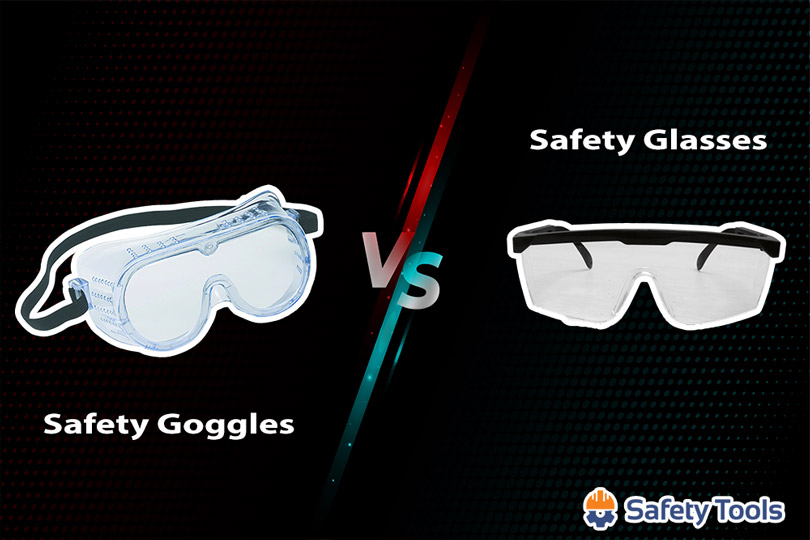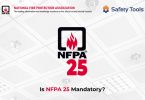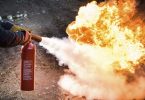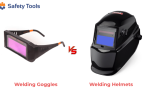Both safety goggles and safety glasses protect your eyes but in different ways. The goggles give you absolute protection around your eyes while the glasses usually give you front and side protection only.
But which one will work better for you? Let’s take a closer look at the two so you can make an informed decision.
Safety goggles
Features to look for
- Impact protection
- Face fitting seal
- Protection filters
Pros
- Entire protection around your eyes
- Can have high impact ratings
- Different lens properties available (like anti-mist)
- Protect from chemical or liquid splash
Cons
- Don’t always fit over regular glasses
- Ventilation issues (too hot, fogs up)
- Eye strain and headaches sometimes occur
- Can be uncomfortable
Safety glasses
Features (to look for)
- Lens size
- Lens shape
- Optical Clarity
- Protective properties
- Mechanical strength
- Side-arm style
- Over regular glasses options (if needed)
Pros
- Protect against many different hazards
- Variety of lens options
- Many styles to choose from
- Better ventilation than goggles
- Suitable for the long-term health of your eyes
Cons
- Obstruction or blind spots
- Can’t protect the eyes completely
- Can’t guard completely from all hazards
The Differences Between Safety Goggles and Safety Glasses
1. Lens size and shape
Safety Goggles
It’s essential to look at the shape and size of the lenses to make sure they won’t impair your vision while wearing them. The place you will be wearing them will determine what size you require. It’s a tight fit when you wear goggles, minimizing the hazards you encounter with your eyes.
Safety Glasses
The more significant the lens, the more area your eye is protected from. The shape of the lens and how it fits your face is a massive factor in protecting you from different dangers.
Most will be concave or wraparound to the shape of your face. More progressive glasses will have the edges of the lenses be angled back towards your face, limiting the space between your face and eyewear.
Winner
Safety glasses will work for most of your protection needs, but depending on your environment, you might have to use goggles for the utmost protection for your eyes. The winner depends on what you need them for.
2. Optical clarity of lens
Safety Goggles
You should use an Optical Clarity Class 1 rating for your safety goggles. This is the top-quality rating, and it’s safe to wear your eye protection regularly without harming your eyes.
Safety Glasses
Class 1 is also advised for your safety glasses since it’s the highest quality you can get. Class 2 is okay to use your safety glasses intermittently, and Class 3, which is at the bottom of the tier, should only be worn occasionally and not for an extended period.
Winner
Although you have more options for Optical Clarity with the safety glasses, both the glasses and goggles come in the highest quality Class 1 (which is favored if you will be wearing them for a long time).
3. Lens protective properties
Safety Goggles
There are not as many options for this category as for safety glasses. However, some of the choices you have are anti-mist and ventilation.
Safety Glasses
There are various lens protective properties available in safety glasses. They include:
- Anti-scratch
- Anti-mist/Anti-fog
- Anti-glare
- UV filters
- Welding filters
Winner
The safety glasses take the win in this category because there are many options of lens protective properties to choose from.
4. Mechanical strength
Safety Goggles
They are available in medium energy, impact rating B. For example, this will resist a 6mm, 0.86g ball traveling at a speed of 120m/s.
Safety Glasses
The topmost protection is low energy, impact rating F. This will resist a 6mm, 0.86g ball traveling at a speed of 45m/s. The side-arms and lens are both tested, and the safety glasses will be classified regarding the lowest protection level they get.
Winner
The safety goggles are the winner because the impact protection can be higher than safety glasses. If you need anything higher, a face shield is advised.
5. Style
Safety Goggles
There are cover goggles and eyecup goggles. You can choose from Direct Vent, Indirect Vent, and Non-Vented goggles.
Safety Glasses
It’s all about protecting your eyes, but if you grab a style that has wider side arms, it can save your temple as well.
Winner
The winner will depend on the environment where you are using your protective eyewear.
6. Over-spectacles
Safety Goggles
If you purchase safety goggles with your eye prescription, there will be no need to wear two pairs of glasses. The goggles will suffice because their lenses will have your prescription strength.
Safety Glasses
You simply can’t use your prescription eyewear as protection. You will need to purchase the style of over spectacles safety glasses. However, 2 in 1, prescription safety glasses are becoming more readily available.
Winner
It’s a draw for this one. You need to do your due diligence and research what works best for you.
7. Comfort
Safety Goggles
People tend to complain that safety goggles can be uncomfortable because there is less ventilation and it gets too hot with continuous use.
Safety Glasses
Because the glasses are not sealed to your face like goggles, you will get more airflow and a more comfortable fit.
Winner
Safety glasses win this war. Most users will agree that they are more comfortable than the safety goggles.
8. Price
Safety Goggles
The price will depend on the type of safety goggles you require and whether you are using a prescription.
Safety Glasses
Again, the price is dependent on what type of safety glasses you are buying. They can range from just a few dollars to what prescription lenses will cost.
Winner
Safety glasses tend to be cheaper than goggles; however, you need to research your work (or play) environment for the proper eyewear protection.
FAQs
1. When to wear safety glasses?
Ans. Many people wear safety glasses in industrial settings to protect their eyes, but they should be worn around things that might cause eye injuries.
2. When to wear safety goggles?
Ans. Safety goggles offer more protection from airborne, splash, flying debris, and chemical dangers. They provide a form-fitting seal against the face and 360-degree protection that safety glasses can’t offer.










Leave a Comment